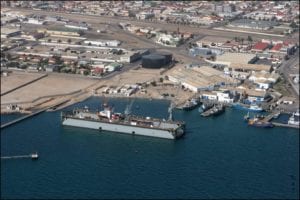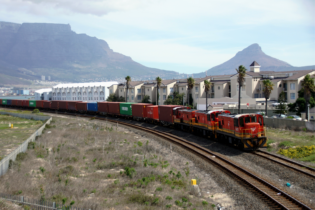The next five years could see huge investments in the expansion of the Port of Walvis Bay, which government has identified as “of critical importance”.
In its quest to realise the recently launched National Development Plan Four (NDP4) government intends to transform the Port of Walvis Bay, along with the country’s rail and road connections to neighbouring countries, into a regional logistics hub by 2017. The year 2017 is when the current five-year NDP4 will have run its course. In addition, government is also going to commission studies aimed at developing a National Logistic Master Plan and a Master Plan on the Development of Regional Urban Centres as part of establishing the country as a logistics hub in the next five years. This is part of the new focused and targeted fourth national development plan (NDP4), which sets out to ensure that “by 2017 the volume in cargo handling and rail-transported cargo is double that of 2012 and [that] the Port of Walvis Bay has become the preferred African west coast port and logistics corridor for southern and central African logistic operations”. The Port of Walvis Bay “needs to be able to accommodate the ocean liner class of container ships and make their turnaround time as short as 24 hours”. Rail connections to Angola, Botswana and Zambia need to be completed by 2017, while the Trans-Kalahari Railway would also receive urgent attention in the next five years. The document also proposes that the municipality of Walvis Bay and other municipalities along the corridor routes should make land available for the upgrading and development of state-of-the-art storage facilities. In addition, the perception of the town of Walvis Bay and other identified towns along corridor routes “should be changed to reflect their increasing importance as major regional distribution centres”. The National Planning Commission (NDC) last week launched NDP4, which replaces NDP3 as part of an overarching strategy to reach Vision 2030. Unlike the previous three national development plans, NDP4 has identified fewer, but more urgent development priorities to leapfrog Namibia to a developed industrialised nation. The development plan for the next five years is fixated on high and sustained growth, employment creation and reducing income inequalities.NDP4 also envisages the attainment of 4 percent real growth in the agriculture sector by 2017, along with a boosted manufacturing output capacity which will contribute 50 percent to the gross domestic product and a 10 percent reduction in the unemployment rate currently estimated to be hovering around 51,2 percent.
The ultimate aim is to distribute the proceeds of the country’s N$82 billion economy to the population of only 2 million. At present only about 20 percent of the population control the national wealth and benefit directly from the economy. Hence the goal is to start achieving an average economic growth rate of 6 percent every year from 2017 going forward. By then there should be 90 000 job opportunities created and a significant reduction in the income inequality gap, according to the authors of the plan. The plan has specific outcomes, of which logistics is a crucial one. “To make Namibia a logistics nation, government would continue to pursue various international and bilateral agreements in setting up one-stop border posts to ensure the flow of cross-border trade is as efficient as possible,” reads the NDP4 document. The National Logistic Master Plan would be aligned to the Transport Master Plan to provide a detailed image of Namibia as an international logistics hub. Source: allafrica.com







